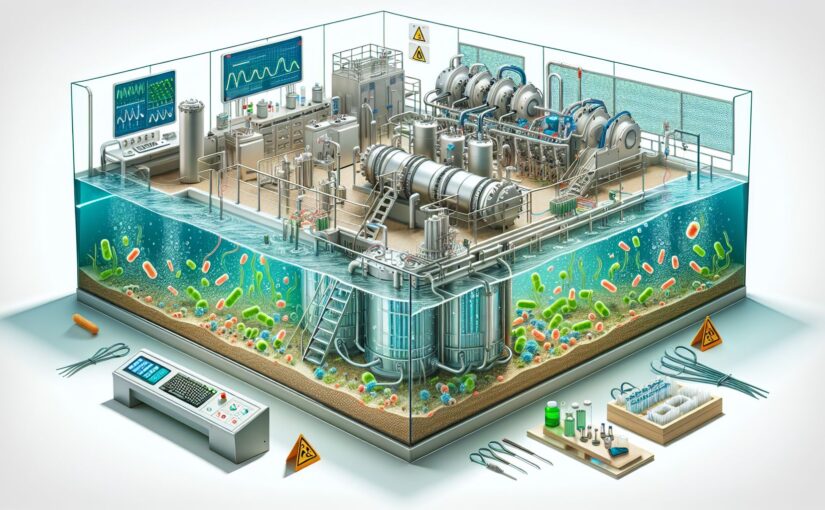Bioelectrochemical systems (BES) are constituting one of the major fields in wastewater treatment technology. They are a group of technologies using biology to harvest electricity from organic matter, such as wastewater.
In the face of the ever-increasing demand for clean water and sustainable energy, bioelectrochemical wastewater systems stand as a beacon of hope. They remarkably combine two pursuits; cleaning wastewater and generating bioelectricity, a catalyst to a green revolution.
The Working Principle: A Simple Concept
Contrary to the complexity of its name, a bioelectrochemical wastewater system operates on a rather simple principle. It’s based on the metabolization of organic matter found in wastewater by electrochemically active bacteria. In the process, these bacteria produce electrons, which are then transferred across an anode and a cathode, setting in motion an electrical current.
Applications: Beyond Wastewater Treatment
While its primary application, and arguably the most popular is in wastewater treatment, bioelectrochemical wastewater systems have much more to offer. They have been explored for use in a range of applications like electricity production, hydrogen production, desalination, and even biosensing.
The Scope of Implementation
The primary application of BES, as already mentioned, is in wastewater treatment. Communities are exploring the technology as a competitive alternative to traditional wastewater treatment processes. The system can help yield purified water fit for reuse, reducing the burden on freshwater sources.
Furthermore, BES is also a potential candidate for renewable energy generation. As the global landscape shifts towards renewable energy, bioelectrochemical wastewater systems are emerging as a viable solution. Notably, the system helps generate electricity from a completely organic source, i.e., through microbial decomposition of organic matter.
The Challenges
While promising, BES is not without its challenges. Firstly, integrating bioelectrochemical wastewater systems on an industrial scale remains a hurdle. The technology, although well-established in laboratory settings, is yet to cross the scalability barrier convincingly.
Moreover, identifying and nurturing the right kind of bacteria to efficiently metabolise the organic matter might pose a challenge. Also, the materials used for the anode and cathode, their cost, and sustainability could be of concern.
The Future
The future, however, looks promising. As research continues to advance, BES practitioners are making strides in overcoming the initial limitations. This advancement, coupled with a dire need for renewable energy and cost-effective waste treatment strategies, makes bioelectrochemical wastewater systems a promising solution for present and future generations.
